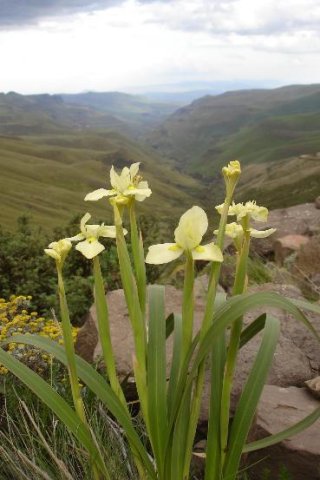Moraea alticola

Author: Ivan Lätti
Photographer: Judd Kirkel Welwitch
Moraea alticola is a robust, clump-forming and hardy plant, reaching heights up to 1 m when in flower.
Only one leaf is annually grown from a corm, but clumps of several corms develop through the forming of small cormels in an underground ring like a subversive organisation around every mature corm. This is vegetative growth that displays identical attributes as the mother plant, unlike plants grown from seed. Once these cormels achieve sufficient size after a few years, they produce not only leaves, but flower stalks next to the mother plant in the clump.
The mother plant in the meantime grows a new corm each year on top of the old one. This growth comes from inside the dry leaf bases of the previous year, affording the corm a fibrous, protective covering. One corm and its direct successors may thus continue flowering annually for several years. Leaf-like spathes on the flower stalk enclosing the flower base, can be seen on the plant in picture.
The plants grow in nature never far from the Lesotho border, in southwest KwaZulu-Natal, the extreme east of the Free State and the far north of the Eastern Cape, essentially the southern Drakensberg and the Malutis of Lesotho. This plant was spotted in the Mkhomazi Wilderness Area, high up in the Drakensberg.
The habitat is remote grassland at altitudes above 2200 m. This land is often moist in summer, very cold or snow-covered in winter when the plants rest, the surviving parts confined to their underground corms. The habitat population is deemed of least concern early in the twenty first century.
The species has found its way into the horticultural market where it seems to do well, also internationally (Pooley, 1998; iNaturalist; iSpot; www.pacificbulbsociety.org; http://redlist.sanbi.org).

